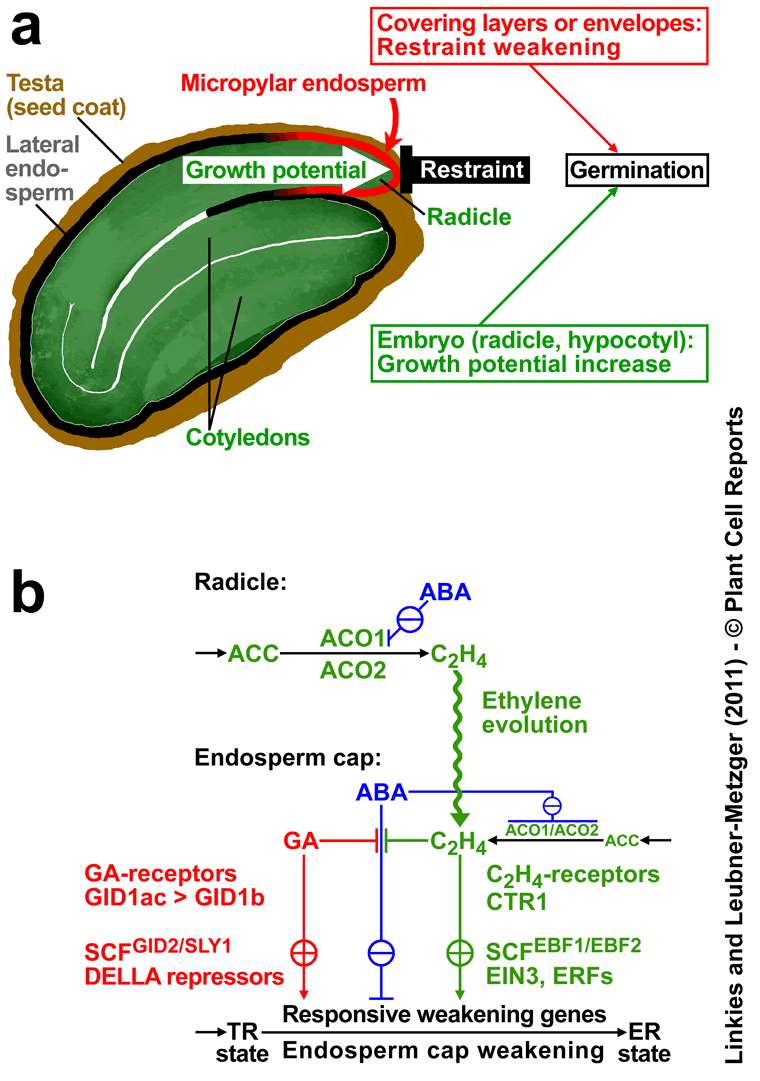Plant Cell Reports 31: 253-270 (2012)
|
Beyond gibberellins and abscisic acid: how ethylene and jasmonates control seed germination
|
Ada Linkies*, Gerhard Leubner-Metzger
*corresponding author: ada.linkies@biologie.uni-freiburg.de
|
University of Freiburg, Faculty of Biology, Institute for Biology II, Botany / Plant Physiology, Schänzlestr. 1, D-79104 Freiburg, Germany, Web: 'The Seed Biology Place' http://www.seedbiology.de
Received: 27 September 2011; Revised: 13 October 2011; Accepted 13 October 2011; Published online 02 November 2011
DOI: 10.1007/s00299-011-1180-1
|
 |
 |
Fig. 2.
a Opposing forces during seed germination: germination is promoted by the growth potential of the embryonic axis (radicle-hypocotyl) and inhibited by the restraint of the seed covering layers (testa, endosperm). The completion of germination by radicle emergence and endosperm rupture occurs when the increasing embryo growth potential overcomes the restraint of the micropylar endosperm (cap). Lepidium sativum seeds are a rosid model to study endosperm weakening as an important developmental process that precedes endosperm rupture. Taken from Graeber et al. (2010).
b Proposed model for the hormonal regulation of endosperm cap weakening and rupture, involving the coordinated interaction of radicle and endosperm tissues and the hormones ABA, GA and ethylene. Modified from Linkies et al. (2009). Abbreviations: ACC= 1-aminocyclopropane-1-carboxylic acid, ACO= ACC oxidase, CTR1= Constitutive triple response1, EIN3= Ethylene insensitive3, ERFs= Ethylene response factors, GID1= Gibberellin insensitive dwarf1
|
|
|
|
|
